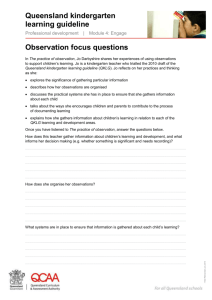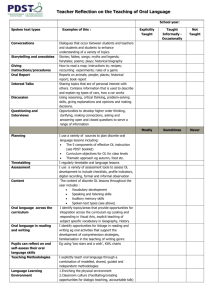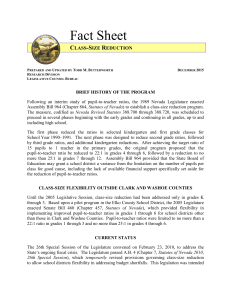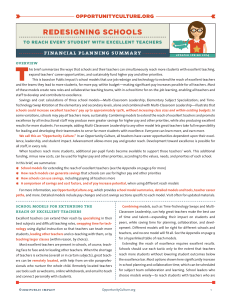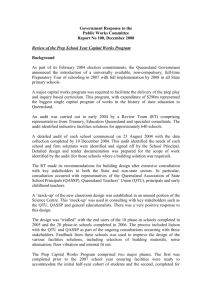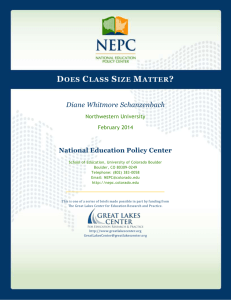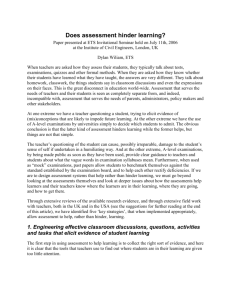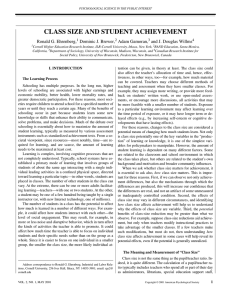Class Size Target Achievement and Average Class Size
advertisement
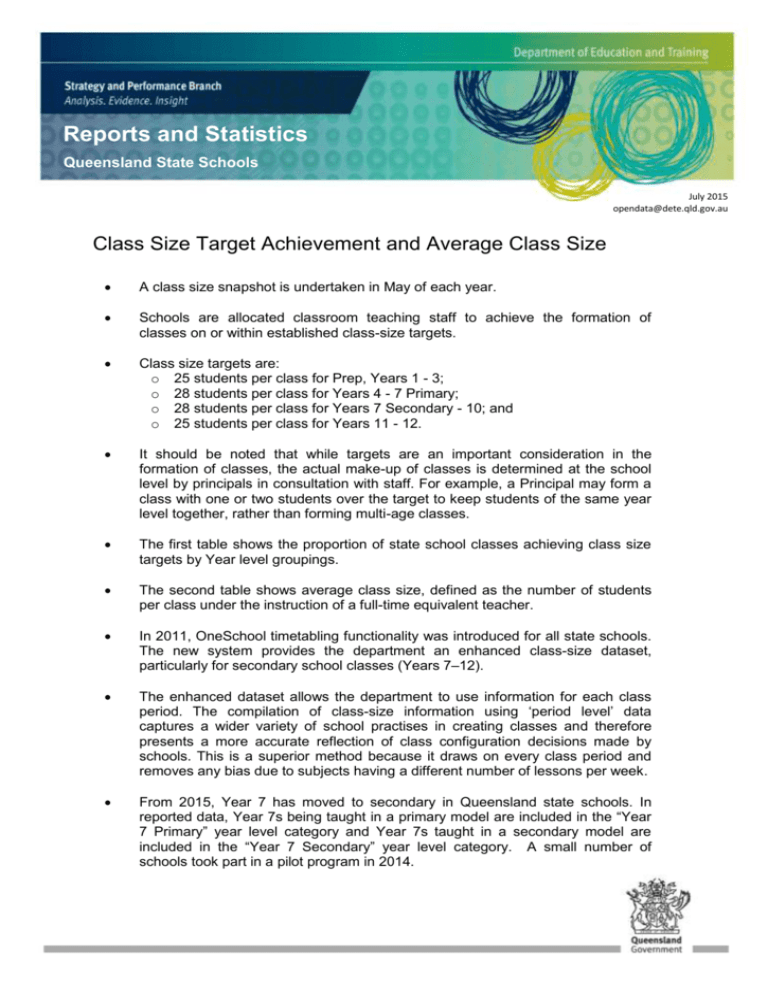
Reports and Statistics Queensland State Schools July 2015 opendata@dete.qld.gov.au Class Size Target Achievement and Average Class Size A class size snapshot is undertaken in May of each year. Schools are allocated classroom teaching staff to achieve the formation of classes on or within established class-size targets. Class size targets are: o 25 students per class for Prep, Years 1 - 3; o 28 students per class for Years 4 - 7 Primary; o 28 students per class for Years 7 Secondary - 10; and o 25 students per class for Years 11 - 12. It should be noted that while targets are an important consideration in the formation of classes, the actual make-up of classes is determined at the school level by principals in consultation with staff. For example, a Principal may form a class with one or two students over the target to keep students of the same year level together, rather than forming multi-age classes. The first table shows the proportion of state school classes achieving class size targets by Year level groupings. The second table shows average class size, defined as the number of students per class under the instruction of a full-time equivalent teacher. In 2011, OneSchool timetabling functionality was introduced for all state schools. The new system provides the department an enhanced class-size dataset, particularly for secondary school classes (Years 7–12). The enhanced dataset allows the department to use information for each class period. The compilation of class-size information using ‘period level’ data captures a wider variety of school practises in creating classes and therefore presents a more accurate reflection of class configuration decisions made by schools. This is a superior method because it draws on every class period and removes any bias due to subjects having a different number of lessons per week. From 2015, Year 7 has moved to secondary in Queensland state schools. In reported data, Year 7s being taught in a primary model are included in the “Year 7 Primary” year level category and Year 7s taught in a secondary model are included in the “Year 7 Secondary” year level category. A small number of schools took part in a pilot program in 2014. Primary year level class data are based on individual roll classes and secondary year level class data (including the pilot Year 7 in high school classes during 2014) are based on individual periods where a specific subject/or set of subjects are being taught on a specific day and time. Due to these differences, care should be taken when making comparisons between primary and secondary year levels or analysing overall totals across all year levels. Proportion of State School Classes Achieving Class Size Targets Years Meeting or Better Than Target Target Better Than Target On Target Over Target Prep – Year 3 2011 25 90% 73% 17% 10% 2012 25 92% 78% 14% 8% 2013 25 88% 72% 16% 12% 2014 25 87% 72% 16% 13% 2015 25 87% 72% 15% 13% 2011 28 94% 82% 12% 6% 2012 28 95% 84% 11% 5% 2013 28 91% 77% 14% 9% 2014 28 89% 75% 14% 11% 2015 28 91% 80% 11% 9% Year 4 – Year 7 Primary Year 7 Secondary – Year 10 a 2011 28 93% 83% 10% 7% 2012 28 96% 85% 10% 4% 2013 28 95% 84% 11% 5% 2014 28 95% 84% 11% 5% 2015 28 95% 85% 10% 5% 2011 25 94% 89% 5% 6% 2012 25 95% 90% 6% 5% 2013 25 94% 88% 6% 6% 2014 25 95% 89% 6% 5% 2015 25 94% 88% 6% 6% Year 11 – Year 12 a Notes: a) Numbers may not total due to rounding. Average Class Size at Queensland State Schools Target Average Class Size 2011 25 22.5 2012 25 20.9 2013 25 21.2 2014 25 21.1 2015 25 21.0 2011 28 24.9 2012 28 23.2 2013 28 23.6 2014 28 23.8 2015 28 22.1 Years Prep – Year 3 Year 4 – Year 7 Primary Year 7 Secondary – Year 10a 2011 28 22.7 2012 28 22.6 2013 28 22.8 2014 28 22.5 28 22.4 2011 25 17.8 2012 25 17.7 2013 25 18.1 2014 25 18.0 2015 25 18.3 2015 Year 11 – Year 12 a





